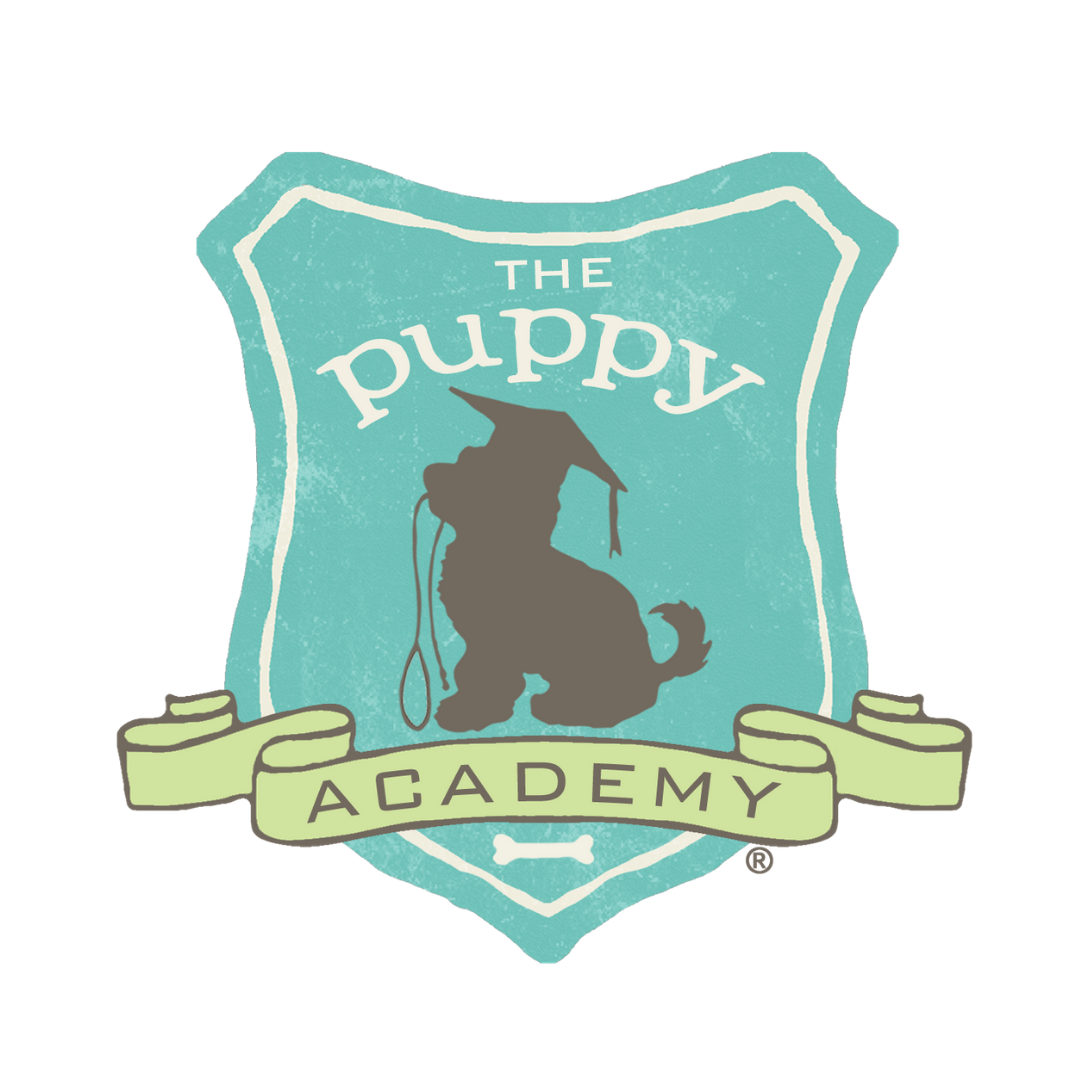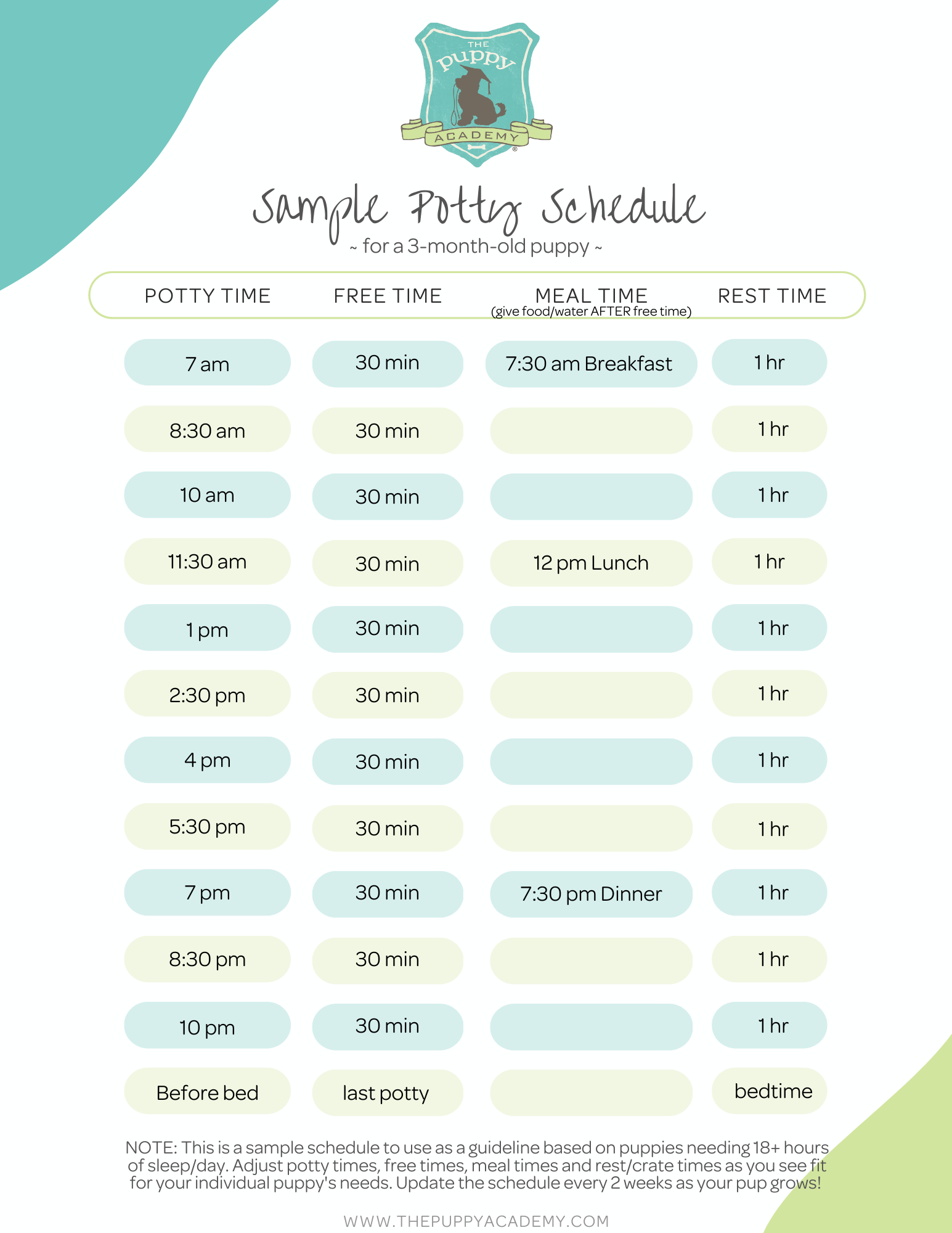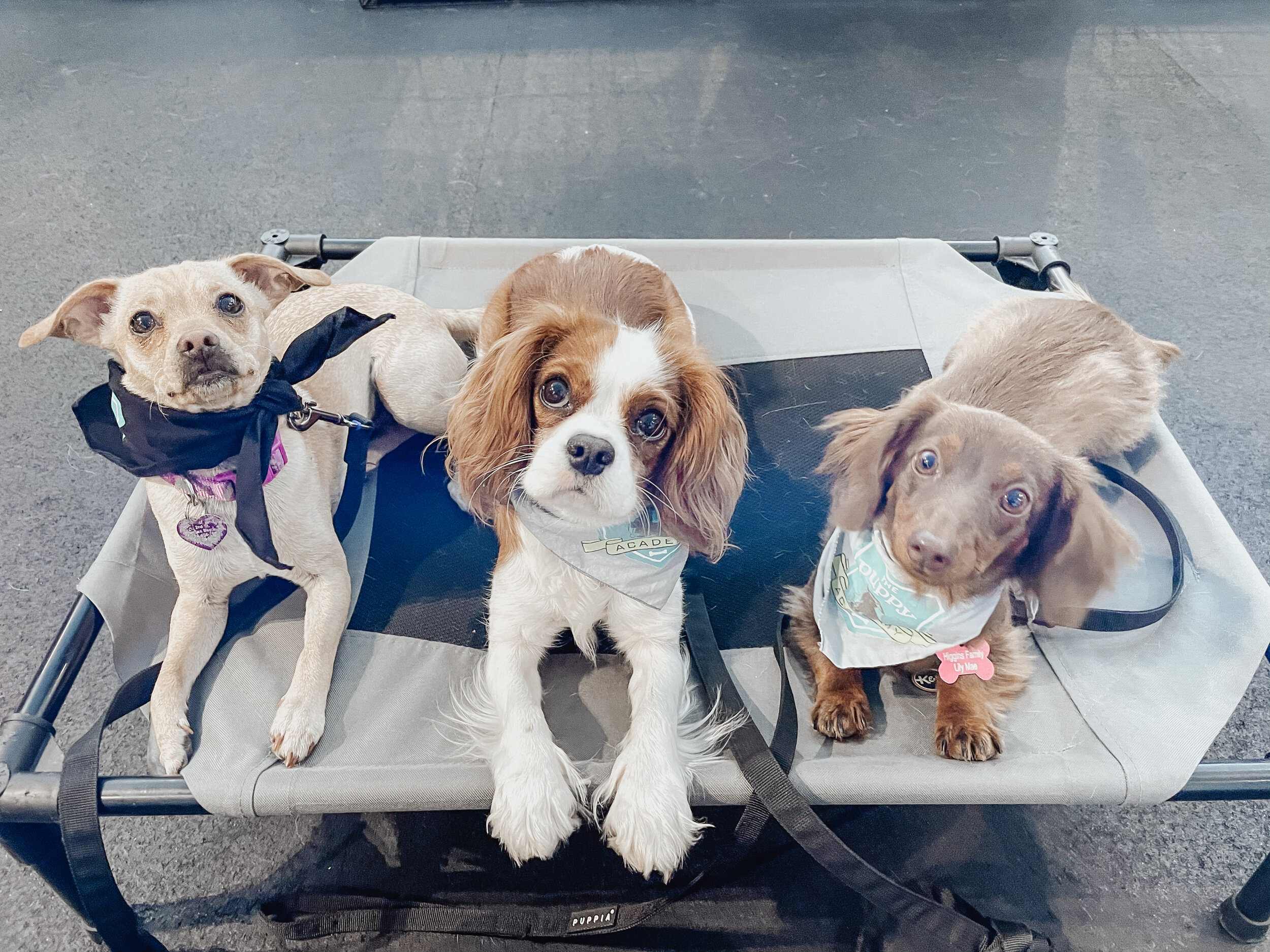Accidents are part of the puppy parent experience! Nevertheless, eventually, we do want our pups to learn how to go outside instead of the rug, and how to hold it! Here’s how to fast-track your puppy’s potty training!
The Puppy Academy student, Genghis!
At The Puppy Academy and in our Online Puppy School, we’ve created an easy-to-follow system to get your puppy potty trained quickly. To us, being potty trained means not just knowing where to potty in the right spot, but also how to hold it for longer increments as your puppy grows. With our system, puppy parents also learn to understand why potty accidents may be continually happening, provide troubleshooting tactics they can use to lessen the number of accidents their puppy is having in the home, and most importantly, the quickest way to get your puppy experiencing potty training success by setting up a daily potty schedule!
This is your guide to not only approach potty training with an effective strategy but if you’re potty training your puppy already, how to end accidents and see long-lasting results!
Enter the Dos and Don’ts of Potty Training!
The Puppy Academy student, Béni!
It’s very common for new puppy owners to fall into some traps when it comes to potty training. Sure letting your puppy out whenever they need to seems logical, but is it benefitting your puppy in the long run? Here is our list of what you shouldn’t do and what you should do instead!
Don’t: Let your puppy freely go potty whenever they please. This means leaving your door open and letting your puppy out into the yard off-leash to wander and sniff as they please! The issue here is that puppies don't naturally know to go outside to potty -- they need to be shown repeatedly to create the habit! And secondly, this behavior creates is that your puppy actually never learns to hold their potty! Eventually, you will end up with an older puppy that will only hold their potty for short periods of time, and even have a higher frequency of potty breaks instead of designated times.
Do: Add structure to your puppy’s day with a puppy schedule! Start to think about designated times to schedule your puppy’s potty breaks throughout the day. Keep in mind to space them out in between certain activities in a way that makes sense based on your puppy’s daily routine. For example, think about a potty training schedule that flows with their other day-to-day activities in a pattern. It should look like: potty break, activity (play, walk, training, etc.,) food and water, nap and repeat! Your day should be a continuous cycle of this pattern.
Don’t: Let your puppy roam and sniff for several minutes to find their perfect potty spot! Your puppy is most likely doing the opposite and just exploring the exciting new space they’re in! Plus, they don’t really understand that you brought them outside to go potty if every time it’s a different spot.
Do: Bring your puppy outside on a leash, even if they aren’t used to one yet, and stay with them while they potty. Pick one spot as their designated potty place so they begin to associate the location and being brought to it each time with going potty!
Don’t: Teach your puppy to use a potty bell while they are still potty training! This is similar to letting your puppy freely go potty whenever. What this behavior is actually enforcing isn’t potty training but rather your puppy training you that bell means let me out. In fact, it might even become a method for your puppy to communicate every time they want to go out, not just potty!
Do: Wait until your puppy has fully mastered potty training and is more mature before introducing the potty bell. This way, you can train them to use a bell, if you really want them to, but not rely on it as your main method of knowing when to let your puppy out to potty.
Don’t: Wait for fifteen, twenty, or even thirty minutes for your puppy to go potty outside. Sometimes when your puppy first goes outside there’s a lot to see and sniff which can easily distract them! Going potty is the last thing on their mind and chances are they might not go. And that’s normal. Waiting doesn’t allow you to create urgency and instead creates opportunities for accidents to happen inside your home when you bring them back inside.
Do: Give your puppy three to five minutes to sniff around on a leash and in the designated area that you want them to go potty. If your puppy doesn’t go, that’s okay! Pick them up, bring them inside, and back into their crate for another ten minutes. After that time, bring them back outside and chances are your puppy is far more likely to go potty that second round! That’s because you’ve given them time for their system to settle and stimulate the need to potty!
Don’t: Praise or reward your puppy before they finish their potty! If you’re scratching your head why this is important that’s because an excited “Good!” and a treat in the middle of your puppy’s potty can startle your puppy and stop them mid-way from finishing their potty! And the result? Your puppy will come back inside and finish on the wood floor or carpet!
Do: Become a tree! Not literally but be still, calm, and save all your praise and their reward until your puppy has completely finished! When they finish, say “Good Go Potty!” to start to create the association with “Go Potty”. After some time and building repetition, your puppy will learn that “Go Potty” means, it’s time to go!
Don’t: Let your puppy free roam the house and wait for them to give you the signal they have to go! This is one of the easiest ways to invite accidents inside your home. Most puppies won’t let you know when they need to go out, they’re babies and don’t understand when and where they should go, yet!
Do: Introduce crate relaxation times after your puppy’s playtime and feeding time so they can settle before their next scheduled potty break and spare you from a surprise accident! This crate down-time is what starts to teach your puppy to learn how to hold their potty. Movement stirs up the bowels and bladder, and since dogs generally do not like to soil where they sleep, putting your puppy in their cozy crate will work with this natural instinct, while encouraging them to relax until it’s time to go!
If your puppy will be alone for long periods where you are unable to take your puppy out for their potty break, you can use a playpen with potty pads and cover a large area of your puppy’s playpen area with the pads to avoid them missing their spot! Eventually, as your puppy learns to go on the pad, you can begin to eliminate a few at a time. However, remember that potty pads will not teach your puppy to be potty trained on their own, and we still encourage the use of the crate whenever possible to help speed up the potty training process and teaching your puppy to hold it!
If you want to learn more about incorporating crate training and potty pads into your puppy’s potty training routine, and if you’re using potty pads and want to know how to transition them outside, head over to our “Potty Training Your Puppy: Tips for New Owners!” blog!
Creating Your Own Potty Training Schedule!
The Puppy Academy student, Luna!
Ready to put together a puppy potty schedule that works for your puppy? In a few easy steps, you can determine when and how often to let your puppy out, plus how to break up their day and schedule potty breaks in between. By doing so, you are providing your puppy the necessary structure and routine they need to fast-track their potty training!
When Should You Schedule Your Puppy’s Potty Breaks?
Ah yes, when and how often should your new puppy go potty! If you are trying to determine your potty training schedule, as a general guideline, what we recommend is to take your puppy’s age in months and then divide it in half to determine how long they can go in between potty breaks. For example, a 4-month-old puppy can usually go two hours before needing another potty break. So when setting a schedule let’s say for the morning before work, if you get up at 6 am you can take them out first thing, then let your puppy out again at 8 am. So that formula again is, Your Puppy’s Age ➗ ½ = Wait period between potty breaks!
Once you have determined your puppy’s wait period, you want to figure out the amount of time your puppy should spend in their crate and then their free time. For this, we’ll use a three-month-old puppy as an example. At three months, and by using the formula, your puppy should be able to hold their potty for an hour and a half. We would recommend trying out 30 minutes of free time to start, with 1 hour of crate time before their next potty break. (Longer free time at such a young age can lead to more accidents, so shorten or lengthen the free time and crate time based on how long your puppy can go without an accident.) During free time, plan for your puppy to be playing in their playpen with safe chew toys, going for a walk (if they’re old enough and have their vaccinations), interactive playtime with you, or puppy training!
The next step would be for you to determine your wake-up time every day, and when your puppy has breakfast, lunch, and dinner time (for this breakdown, we’re following a younger puppy’s feeding which is usually eating three small portioned meals throughout the day) so you can plot out your schedule! The very beginning of your puppy’s potty schedule will kick off with your wake-up time as their first potty break. Still following a three-month-old puppy example, for the remainder of the day you can build out the schedule in increments of every hour-and-a-half for potty breaks!
Here is a sample schedule that we put together for a three-month-old puppy to help you map your puppy’s potty breaks every day! For more help on creating a full daily puppy schedule, you can visit our blog “Create a Daily Schedule for Your Puppy!” which breaks down more activities to plan for your pup!
Of course, your puppy’s schedule should match up closely with your own personal schedule in order for it to make sense! Create one that matches your work, school, and everyday life activities. The goal of this process is to create structure and consistency, the two key factors in successful potty training! And if you can’t follow it exactly every day, that’s okay! Do it as often as you can, when you can while you’re home.
As your puppy grows, so will their wait, crate, and free times, ultimately making it much easier on you. We recommend updating the schedule every two weeks by fifteen to thirty-minute potty break intervals, depending on how your puppy is doing. With that, adjust their free time and crate time as well! If your puppy happens to have an accident, use that as fantastic feedback to you to lower their potty break time and free time for a few days and build back up again. It’s not uncommon for this to happen!
And lastly, potty training is a family effort so make sure every member of your family is on board and aware of the schedule so there are no lapses in your puppy’s potty breaks. Having everyone on the same page will get your puppy there quicker too!
Check out these blogs related to puppy training and more!
A Puppy Parent’s Guide to Microchipping!
Puppyhood Made Easy for New Owners: Setting Up Your Home for a New Puppy!








